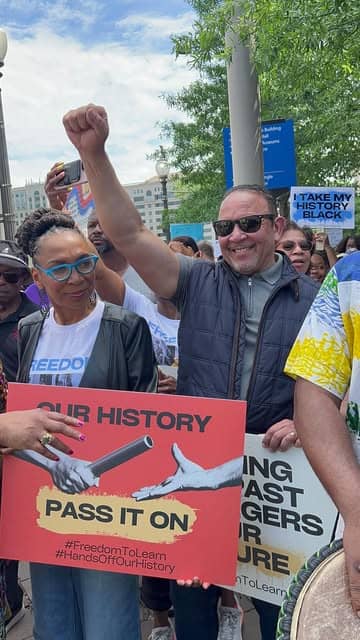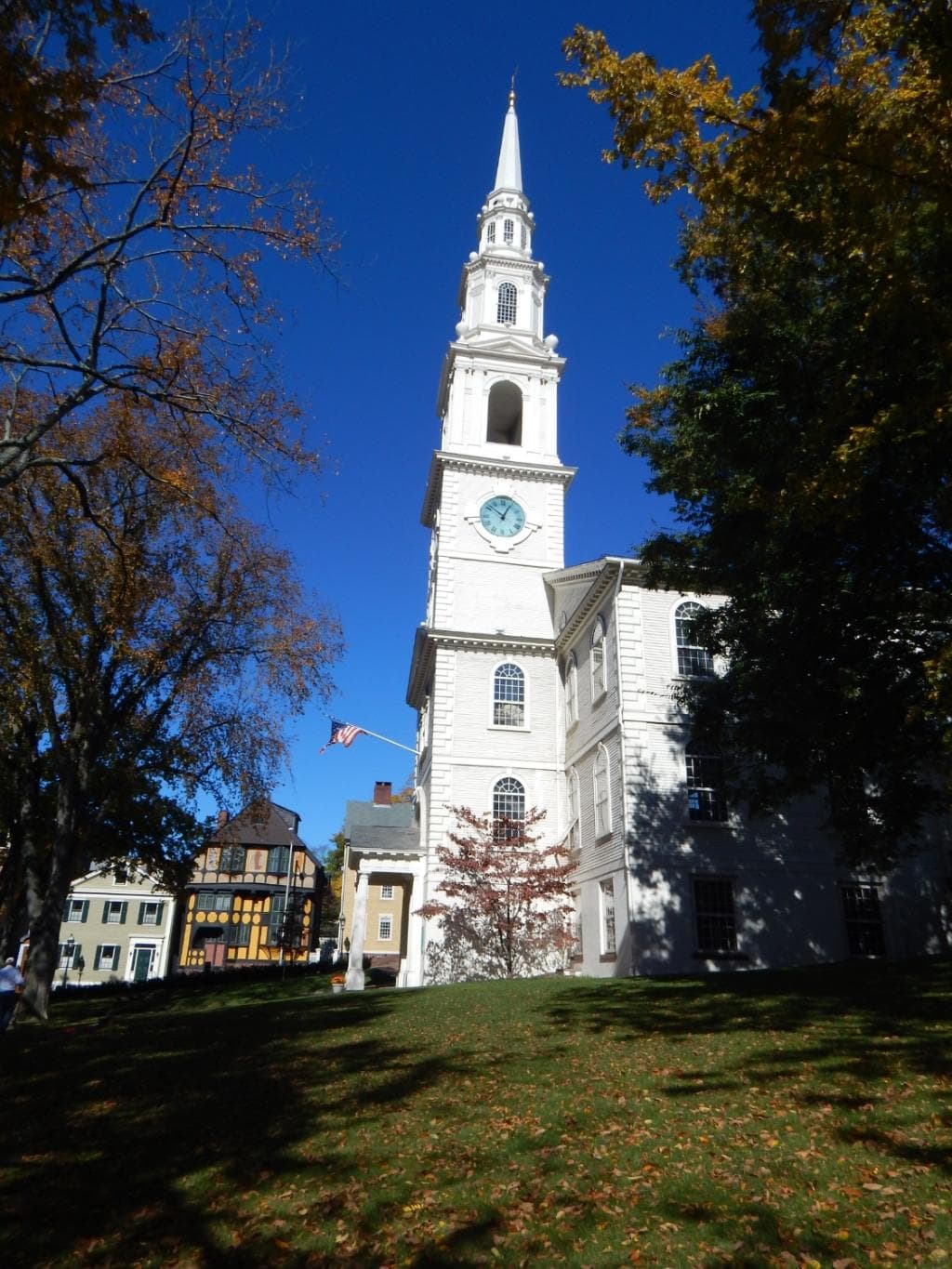National Center for the Study of Civil Rights and African-American Culture
A vital institution dedicated to preserving and studying the history of the Civil Rights Movement and African-American culture.
Highlights
Must-see attractions

Social
From TikTok & Reddit
Best Time
Fewer crowds, more focused learning
National Center for the Study of Civil Rights and African-American Culture
Best Time
Fewer crowds, more focused learning
Highlights
Must-see attractions
A vital institution dedicated to preserving and studying the history of the Civil Rights Movement and African-American culture.
"A profound journey through history, essential for understanding America's past and present."
Allocate Ample Time
Give yourself at least 2-3 hours to truly absorb the exhibits and historical context. :clock1:
Engage with Staff
The center's experts can offer invaluable insights and context to your visit. :speech_balloon:

Highlights
Discover the most iconic attractions and experiences
Civil Rights Movement Archives
Exhibition Halls
Explore powerful artifacts and documents detailing the struggles and triumphs of the Civil Rights Movement.
African-American Cultural Exhibits
Galleries
Immerse yourself in the rich tapestry of African-American heritage, art, and traditions.
Educational Programs & Lectures
Auditorium/Event Spaces
Engage with scholars and community leaders through insightful talks and educational sessions.
Plans like a pro.
Thinks like you
Planning Your Visit
Understand the Focus
Check for Special Events
Best Times
Insider Tips
from TikTok, Instagram & Reddit
Allocate Ample Time
Give yourself at least 2-3 hours to truly absorb the exhibits and historical context. :clock1:
Engage with Staff
The center's experts can offer invaluable insights and context to your visit. :speech_balloon:
Check Event Schedule
Look for lectures or special exhibits that align with your interests. :calendar:
Comfortable Shoes
You'll be doing a lot of walking and standing, so wear comfortable footwear. :athletic_shoe:
Tips
from all over the internet
Allocate Ample Time
Give yourself at least 2-3 hours to truly absorb the exhibits and historical context. :clock1:
Engage with Staff
The center's experts can offer invaluable insights and context to your visit. :speech_balloon:
Check Event Schedule
Look for lectures or special exhibits that align with your interests. :calendar:
Comfortable Shoes
You'll be doing a lot of walking and standing, so wear comfortable footwear. :athletic_shoe:
What Travellers Say
Reviews Summary
Visitors consistently praise the center for its profound historical exhibits and its dedication to preserving African-American culture. While some note that the academic focus might require more time for in-depth study, the overall experience is described as enlightening and essential for understanding American history.
"history"
cletus ledbetter
""
G Guy
""
Mary Boone
What People Like
What People Dislike
Frequently Asked Questions
🚇 🗺️ Getting There
The center is typically accessible via public transportation and car. Check local transit maps for bus routes or consider ride-sharing services. Parking information is usually available on their official website.
Parking availability can vary. It's best to consult the center's official website or call ahead to confirm parking options and any associated fees.
Information on nearby bus stops or train stations can be found on the center's website or by using a local transit app.
Most major cultural institutions are committed to accessibility. It's recommended to check the center's accessibility page on their website for details on ramps, elevators, and other accommodations.
Yes, the center can be a significant part of a day trip, especially if you plan your itinerary to include other nearby historical sites or attractions.
🎫 🎫 Tickets & Entry
While not always mandatory, purchasing tickets in advance is often recommended, especially during peak seasons or for special events, to guarantee entry and avoid queues. Check their official website for booking options.
Opening hours can vary by day and season. Always refer to the official website for the most up-to-date information on operating hours and any potential closures.
Admission fees can apply, though some centers offer free general admission or have specific days with free entry. Verify pricing on their official website.
Look for potential discounts for students, seniors, military personnel, or group rates. These are typically detailed on the center's ticketing page.
Yes, general admission usually allows for self-guided exploration. However, guided tours may offer a more in-depth experience and are often available for booking.
🎫 🏛️ Onsite Experience
Visitors often highlight the archives related to the Civil Rights Movement and the exhibits showcasing African-American cultural heritage. Specific artifacts from the Civil Rights era are particularly impactful.
Most visitors spend at least 2-3 hours to fully appreciate the exhibits. If you plan to attend lectures or special programs, allocate more time.
Photography policies can vary. Some areas may permit non-flash photography, while others might restrict it to protect artifacts. Check signage or ask staff for guidance.
Guided tours are often offered and can provide deeper historical context and insights. Inquire about tour schedules upon arrival or check the website in advance.
The center hosts a range of educational programs, including lectures, workshops, and special exhibitions focused on Civil Rights history and African-American culture.
🍽️ 🍽️ Food & Dining
Some centers have on-site cafes or restaurants, while others may have limited concessions. It's advisable to check the center's website for current dining facilities.
Policies on outside food and beverages vary. Many cultural institutions do not permit food or drinks inside exhibition areas. Check the center's visitor guidelines.
If the center doesn't have extensive dining, explore nearby restaurants and cafes for a variety of culinary choices.
📸 📸 Photography
Photography rules are usually posted. Generally, non-flash photography is permitted in most public areas, but specific exhibits may have restrictions.
Tripods and selfie sticks are often prohibited to ensure visitor safety and prevent damage to exhibits. Always check the center's specific policy.
Look for visually striking exhibits, architectural features, or outdoor spaces that capture the essence of the center's mission.
For Different Travelers
Tailored advice for your travel style
Families with Kids
It's beneficial to prepare children beforehand by discussing the general themes of the Civil Rights Movement and African-American culture in age-appropriate terms. This can help them better understand and appreciate the exhibits. Consider focusing on the triumphs and the importance of standing up for what's right.
Students and Educators
Many centers provide educational programs, workshops, and resources specifically for school groups. Planning a visit with an educational focus can provide students with a deeper, more impactful understanding of American history and the ongoing relevance of Civil Rights issues.
Deep Dives
In-depth insights and expert knowledge
The Significance of Civil Rights Archives
These collections often include photographs, letters, personal belongings of activists, and official documents that provide an unfiltered glimpse into the era. The center's commitment to studying and presenting this history ensures that these vital narratives are not forgotten and continue to educate future generations.
It's important to approach these exhibits with a sense of reverence and a willingness to learn. The impact of these primary source materials is immense, fostering empathy and a deeper understanding of the ongoing fight for justice and human rights.
Exploring African-American Cultural Heritage
The center aims to showcase the resilience, creativity, and enduring contributions of African Americans throughout history. This includes highlighting influential figures, significant cultural movements, and the everyday lives of communities that have often been overlooked in mainstream historical accounts. Experiencing these exhibits offers a more complete and nuanced understanding of American identity.
Engaging with these cultural displays provides an opportunity to appreciate the depth and breadth of African-American influence on the nation's cultural landscape. It's a chance to connect with stories of heritage, innovation, and the ongoing evolution of a vibrant cultural legacy.






Social
from TikTok, Instagram & Reddit